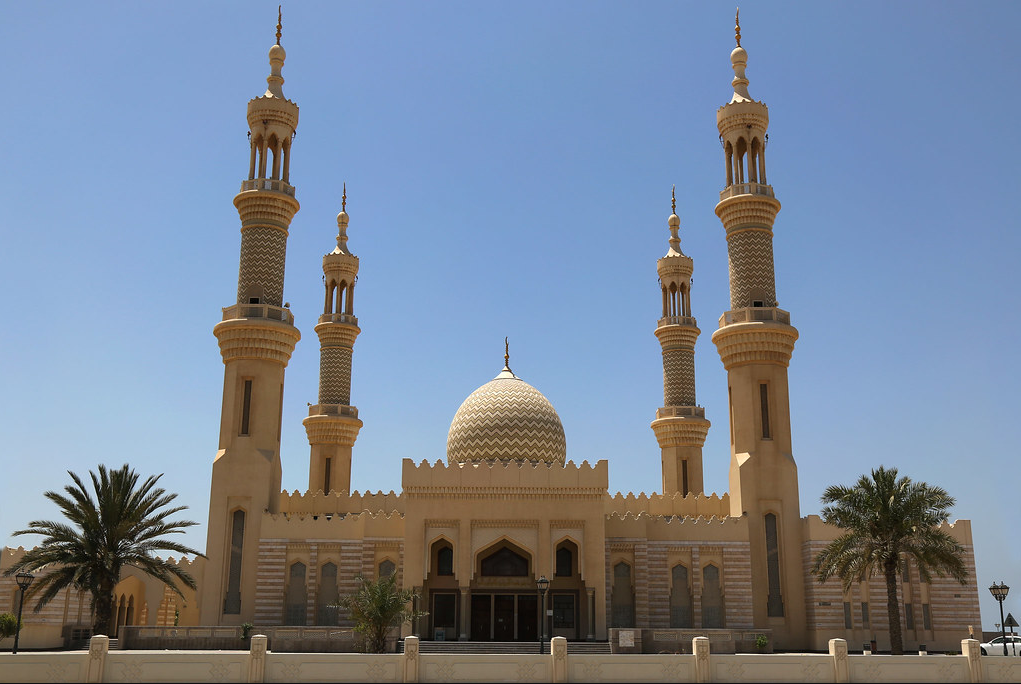Understanding the prayer time umm al quwain is crucial for the Muslim community living there or visiting. Islamic prayers, known as Salah, are a fundamental part of a Muslim’s day, observed at specific times throughout the day. These times are determined by the position of the sun in the sky, marking five distinct parts of the day when Muslims are called to pray. This practice helps devotees maintain a rhythm of worship throughout the day, enriching their faith and providing a framework for their daily activities.
Table of Contents
Daily Prayer Times in Umm Al Quwain
Each day in Umm Al Quwain, Muslims perform five prayers at specific times. The first prayer, Fajr, is said at dawn before the sun rises. This Prayer Time Umm Al Quwain starts the day with a reflection on gratitude and seeking guidance. As the sun reaches its highest point, Dhuhr, the noon prayer, is observed. This Prayer Time Umm Al Quwain serves as a break during the bustling day to reconnect with faith and restore balance. Asr, the afternoon prayer, is said when the shadow of an object is the same length as the object itself, offering a moment to pause and remember God in the midst of afternoon activities.
As the sun sets, Maghrib is prayed, marking the end of the day’s work and the beginning of the evening rest. It’s a time to reflect on the day’s events and seek peace for any hardships faced. The final prayer, Isha, is performed when the sky darkens completely, providing a moment to account for the day’s deeds before retiring for the night. Each of these prayers holds significant spiritual meaning and helps regulate the day in a disciplined and thoughtful manner.
Calculating Prayer Times in Umm Al Quwain
Prayer times in Umm Al Quwain are calculated using the position of the sun. The precise times change daily and vary depending on the time of year and geographical location. Traditionally, scholars used the length of shadows and the sun’s trajectory to determine Prayer Time Umm Al Quwain manually. Nowadays, with advancements in technology, these calculations are often performed by software that uses astronomical data to predict the exact times for prayers for each location.
This modern method ensures accuracy and ease for Muslims to follow their Prayer Time Umm Al Quwainschedule without needing extensive knowledge of astronomy or mathematics. It’s important for the faithful to know that these times are calculated with great care to uphold the sanctity and precision required by the faith.
How Prayer Times Vary Throughout the Year
In Umm Al Quwain, as in any other part of the world, the Prayer Time Umm Al Quwain are not constant throughout the year. They shift slightly each day. During the summer, the days are longer, so the time between Fajr and Maghrib increases, stretching the hours during which the prayers are spread. Conversely, in the winter, when days are shorter, the times between prayers compress.
This variation requires Muslims to be continually aware of the changing Prayer Time Umm Al Quwain schedules, which can be particularly challenging during fasting months like Ramadan, when the timing of Suhoor (pre-dawn meal) and Iftar (meal to break the fast) also changes daily. Understanding these patterns is crucial for proper religious observance.
Tools and Apps for Prayer Time Notifications
To assist with keeping track of prayer times, several mobile apps and tools are available for residents of Umm Al Quwain. These apps not only provide daily prayer schedules based on geographic location but also include features like alarms for each Prayer Time Umm Al Quwain, Qibla finders to locate the direction of the Kaaba in Mecca, and even reminders for special Islamic days and nights.
Popular apps like Muslim Pro, Al-Moazin, and IslamicFinder are widely used for their reliability and user-friendly interfaces. These tools are invaluable for helping Muslims, especially those with busy schedules, maintain their Prayer Time Umm Al Quwain practices without interruption.
The Significance of Jumu’ah (Friday Prayer) in Umm Al Quwain
Jumu’ah, the Friday prayer, holds a special place in the hearts of Muslims. It is a time when the community gathers in a grand congregation, replacing the Dhuhr prayer. In Umm Al Quwain, major mosques host thousands of worshippers who come together to listen to the Khutbah (sermon) that addresses spiritual and communal matters, followed by the congregational prayer.
This gathering reinforces the sense of community and serves as a weekly reminder of the unity and equality of all individuals before God. It’s a spiritual recharge that motivates the faithful to continue their devout practices and serve their communities.
Conclusion
Understanding and observing the prayer times in Umm Al Quwain is a foundational aspect of a Muslim’s daily life. With the help of modern tools and a strong community spirit, maintaining this crucial aspect of faith becomes more manageable and meaningful. Whether you are a resident or a visitor, being aware of these Prayer Time Umm Al Quwain helps foster a disciplined and fulfilling spiritual life.
Read Also:Sharjah Juma Prayer Time Toda
